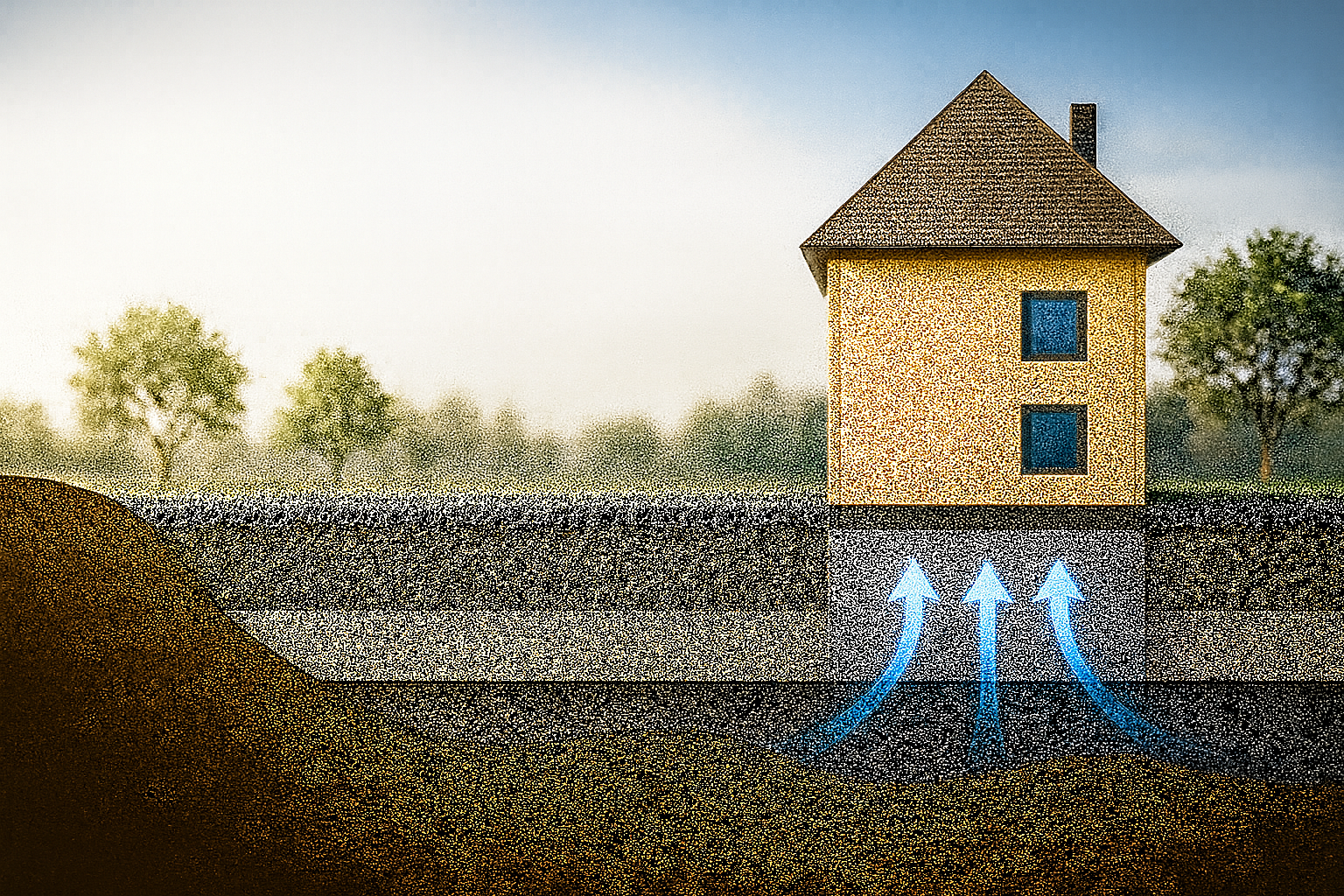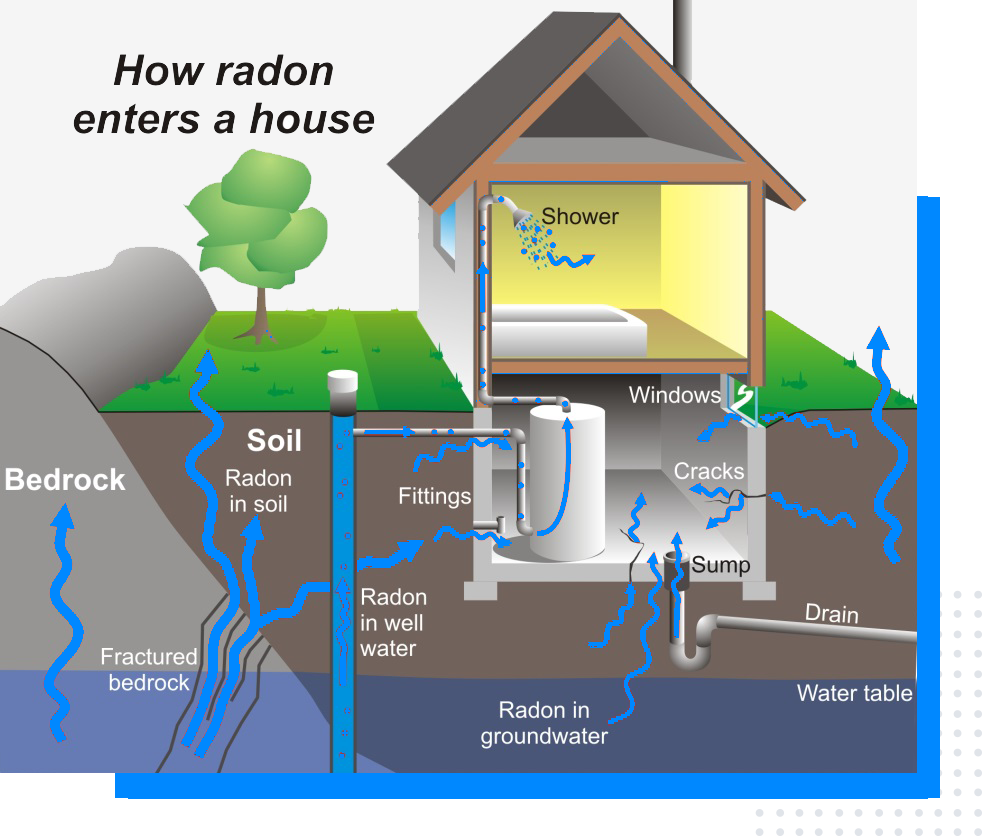About Radon
Radon is a naturally occurring radioactive gas that seeps into homes from the ground. It’s invisible, odorless, and the second leading cause of lung cancer after smoking. Levels can vary from home to home, making testing the only way to know your risk. If high levels are found, mitigation systems can reduce radon by up to 90%, creating a safer living environment.


Radon and Your Health
When radon gas enters the home, it breaks down into radioactive particles that can be inhaled into the lungs. Over time, these particles damage lung tissue, increasing the risk of lung cancer. Unlike smoke or carbon monoxide, radon has no smell, taste, or colour — so the damage often goes unnoticed until it’s too late. Health Canada identifies radon as the second leading cause of lung cancer in the country, responsible for more than 3,000 deaths each year.
Radon Entry Points
Radon gas moves up from the soil and seeps indoors through cracks, drains, sump pumps, or even well water. Once inside, it can accumulate to dangerous levels without any smell or warning. The only way to know your home’s risk is to test.
